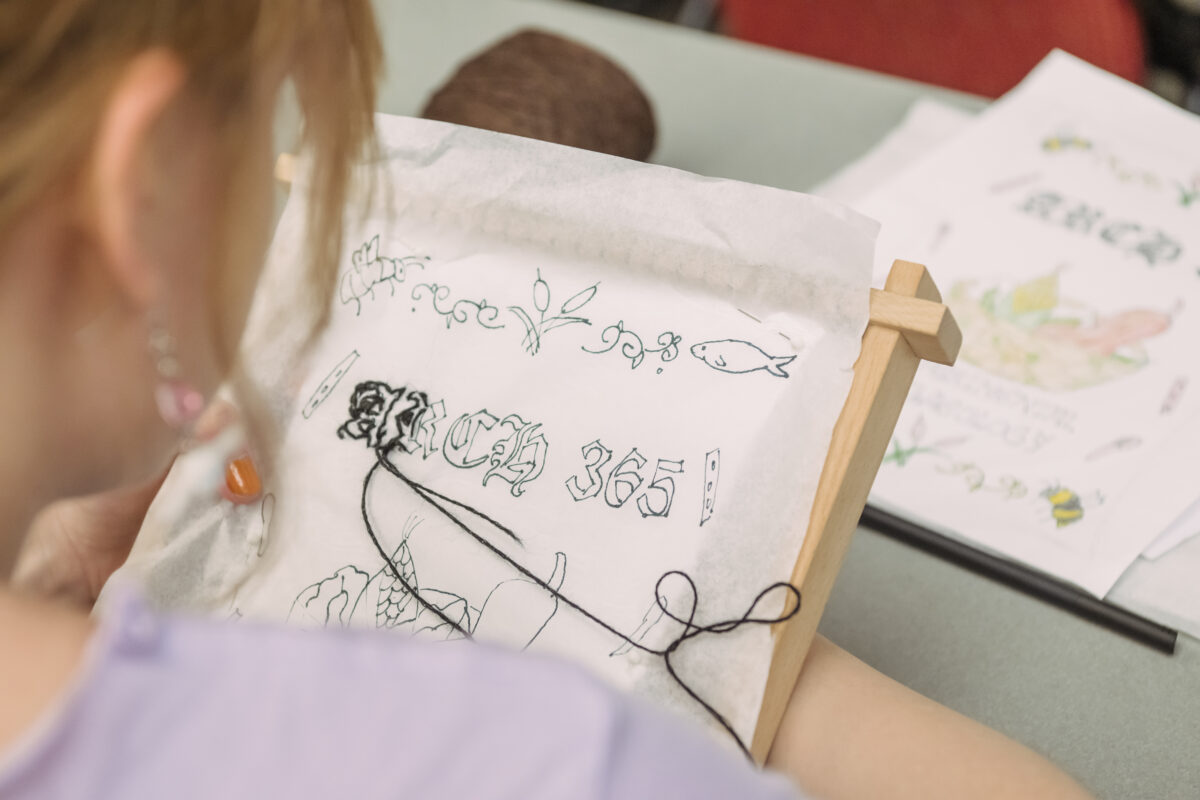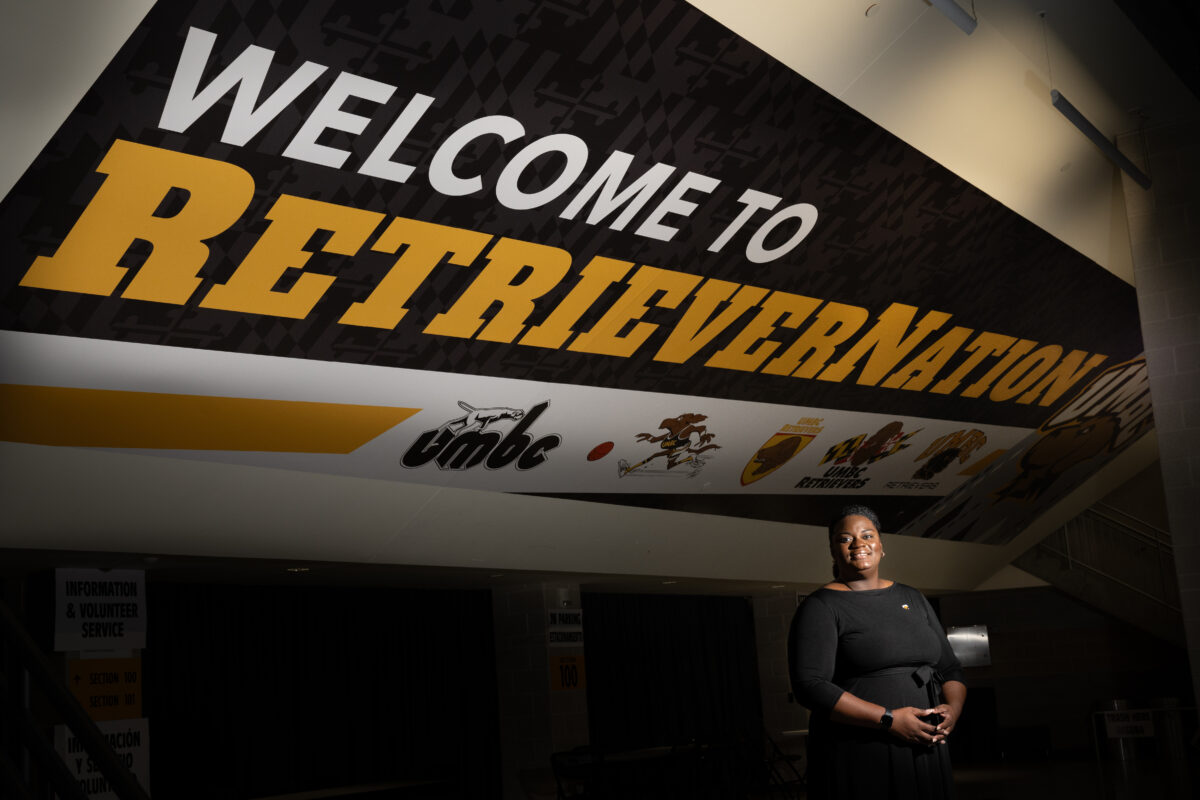Education in Motion
UMBC students race a sea monster through Baltimore to highlight the environmental impacts of plastic waste.
On June 14, the Kraken crept through Baltimore, traveling across the city’s roadways, dipping into the Chesapeake Bay, and trekking through muddy and sandy terrain. After an arduous eight-hour journey, it emerged victorious.
No, Baltimore wasn’t being overtaken by a legendary sea creature. The Kraken Upcycle was an award-winning UMBC student entry in the 17th annual East Coast Kinetic Sculpture Race hosted by the American Visionary Art Museum. Race contestants built all-terrain bicycle-powered works of art to navigate 14 miles through Baltimore’s Harbor.
Five years ago, Steven McAlpine, assistant director of interdisciplinary studies (INDS), was visiting the Baltimore Museum of Industry when he saw entries to the Kinetic Sculpture Race speeding down Key Highway. He was captivated by the way each entry combined creative artistry with engineering expertise.
McAlpine brought the idea to UMBC, where his students were energized by the prospect of starting a Kinetic Sculpture Race team and enrolled in a BreakingGround-funded pilot course to explore the idea in spring 2014. Through independent study and an INDS Special Topics class, they designed and built the Kraken Upcycle throughout the next year.
The three classes brought together students in mechanical engineering, visual arts, geography and environmental systems, media and communications studies, and INDS. Drawing on the 2014 Kinetic Sculpture Race theme of sustainability, the team quickly resolved to use upcycled materials, specifically plastic water bottles, to create their vehicle. However, as they began discussing the actual sculpture design, the challenges of working across their disciplinary differences began to emerge.
The engineers were eager to start building right away, and favored the initial idea of a “trashmonster”— a function-driven sculpture that would mimic the Great Pacific garbage patch. The artists advocated for more brainstorming to develop a visually gripping design that would resonate aesthetically.
After puzzling over the design for a few more weeks and reading articles about the dangers of plastic bottles, the team had a breakthrough moment. One student casually remarked that plastics were the “new monsters of the sea,” bringing to mind the legendary Kraken. With a powerful image to rally behind, the Kraken Upcycle began to come to life.
The team set off collecting hundreds of used water bottles, plastic bags, large barrels, and aluminum tubes to create the sculpture and pontoons. The UMBC Racing team offered vehicle expertise and, after consulting with experienced kinetic sculpture racers, the Kraken team purchased a used quadricycle to power the sculpture. Finally, the Kraken Upcycle emerged: a gigantic octopus fashioned out of chicken wire, plastic fencing, water bottles, and plastic bags.
Collaboration across disciplines can be a slow and uncomfortable process, but it made all the difference for the students’ experience and the final product. Putting the finishing touches on the sculpture, Stephen Moore ’15, computer engineering and mathematics, explained, “Every time we engineers get stuck on something, one of the art students comes in and says, ‘Oh, we should design it like this.’ It’s a whole new perspective on how to solve the problem and it’s been amazing.”
As the June 14 race date drew closer, it was time to ensure that the Kraken could endure the notoriously challenging race course, on land and water. To test the pontoon system, the team threw the kinetic sculpture into Pig Pen Pond. They biked it across campus on test rides and introduced it to crowds at sustainability festivals.
During the race Gabriel Margarida ’17, mechanical engineering; Rob Ford ’16, environmental science; Vijay Raju, media and communication studies; and Kirby Kelbaugh ‘15, INDS, powered and piloted the Kraken on its long journey through Baltimore. They overcame a mechanical breakdown to win the Grand East Coast National Mediocre Champion Award, an honor that qualifies entries for the Kinetic Grand Championship in California.
Fresh from its victory, the Kraken will be on display at Baltimore’s Artscape festival, July 17-19. McAlpine will later share his reflections on the Kraken and project-based learning at an interdisciplinary studies conference at Merrimack College.
“The Kinetic Sculpture Racing team at UMBC demonstrated the innovative energy that a project-based learning course can inspire,” McAlpine says. “For me, the project underscored the importance of building communities both on and off campus to share expertise.”
UMBC’s team is already gearing up for next year’s race, starting with another INDS course in the fall. Margarida shares, “It’s that kind of learning that sparks the desire, that sparks the passion, that motivates people to be able to apply this knowledge.”
“It was not like anything I ever really experienced before,” says Kelbaugh. “It’s a whole new way of learning.”
(7/8/2015)
© University of Maryland, Baltimore County 1000 Hilltop Circle, Baltimore, MD 21250 410-455-1000




